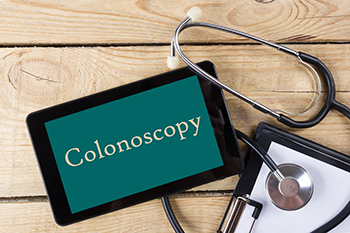Colonoscopy
What is a Colonoscopy?
A colonoscopy (koh-luh-NAH-skuh-pee) allows a doctor to look inside the entire large intestine. The procedure enables the physician to see things such as inflamed tissue, abnormal growths, and ulcers. It is most often used to look for early signs of cancer in the colon and rectum. It is also used to look for causes of unexplained changes in bowel habits and to evaluate symptoms like abdominal pain, rectal bleeding, and weight loss.
Preparation:
You will be given specific instructions in advance that will explain what you need to do to prepare for your colonoscopy. Your colon must be completely empty for the colonoscopy to be thorough and safe. Be sure to inform your doctor of any medical conditions you might have or medications you take on a regular basis such as
- aspirin
- arthritis medications
- blood thinners
- diabetes medication
- vitamins that contain iron
The medical staff will also want to know if you have heart disease, lung disease, or any medical condition that may need special attention. You must also arrange for someone to take you home afterward, because you will not be allowed to drive after being sedated.
Procedure:
For the colonoscopy, you will lie on your left side on the examining table. You will be given pain medication and a moderate sedative to keep you comfortable and help you relax during the exam. The doctor and a nurse will monitor your vital signs, look for any signs of discomfort, and make adjustments as needed.
The doctor will then insert a long, flexible, lighted tube into your rectum and slowly guide it into your colon. The tube is called a colonoscope (koh-LON-oh-skope). The scope transmits an image of the inside of the colon onto a video screen so the doctor can carefully examine the lining of the colon. The scope bends so the doctor can move it around the curves of your colon. You may be asked to change positions at times so the doctor can more easily move the scope to better see the different parts of your colon. The scope blows air into your colon and inflates it, which helps give the doctor a better view. Most patients do not remember the procedure afterwards.
The doctor can remove most abnormal growths in your colon, like a polyp, which is a growth in the lining of the bowel. Polyps are removed using tiny tools passed through the scope. Most polyps are not cancerous, but they could turn into cancer. Just looking at a polyp is not enough to tell if it is cancerous. The polyps are sent to a lab for testing. By identifying and removing polyps, a colonoscopy likely prevents most cancers from forming.
The doctor can also remove tissue samples to test in the lab for diseases of the colon (biopsy). In addition, if any bleeding occurs in the colon, the doctor can pass a laser, heater probe, electrical probe, or special medicines through the scope to stop the bleeding. The tissue removal and treatments to stop bleeding usually do not cause pain. In many cases, a colonoscopy allows for accurate diagnosis and treatment of colon abnormalities without the need for a major operation. During the procedure you may feel mild cramping. You can reduce the cramping by taking several slow, deep breaths. When the doctor has finished, the colonoscope is slowly withdrawn while the lining of your bowel is carefully examined. Bleeding and puncture of the colon are possible but uncommon complications of a colonoscopy.
A colonoscopy usually takes 30 to 60 minutes. The sedative and pain medicine should keep you from feeling much discomfort during the exam. You may feel some cramping or the sensation of having gas after the procedure is completed, but it usually stops within an hour. You will need to remain at the colonoscopy facility for 1 to 2 hours so the sedative can wear off.
Rarely, some people experience severe abdominal pain, fever, bloody bowel movements, dizziness, or weakness afterward. If you have any of these side effects, contact your physician immediately. Read your discharge instructions carefully. Medications such as blood-thinners may need to be stopped for a short time after having your colonoscopy, especially if a biopsy was performed or polyps were removed. Full recovery by the next day is normal and expected and you may return to your regular activities.
For more information : go to www.digestive.niddk.nih.gov


